Marvel vs. Capcom 2 is the first fighting game that captivated me. The combination of the colors, the over-the-top hyper combos, the fact that I could have Sentinel and Servbot on a team together had me making a beeline to the cabinet first thing when I walked through my local arcade’s doors. I remember my friend getting legitimately angry that I figured out how to do Iron Man’s Proton Cannon hyper before him. Marvel has always been an important franchise to me, and the fighting game community as a whole.
This history was the reason I was so excited about a new MvC game, especially after it felt like we would never see another one after Disney acquired Marvel and seemed to adjust its approach to licensing. However, some red flags like questionable art and oversimplification of controls, and a slow reveal of information during promotion had me concerned about the execution of Marvel vs. Capcom: Infinite.
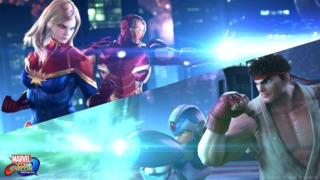
The basic setup of Marvel vs. Capcom: Infinite is a two-on-two tag fighter. You can call upon your second character at any time, even mid-combo, which leads to a ton of exciting, flashy strings of attacks that might have you tagging between your characters as many as four times. This fast tag replaces the assist attacks found in the previous games.
In addition to your two characters, you’ll also select one of six Infinity Stones. These stones each have different powers, such as pulling your opponent closer to you or firing a homing projectile, as well as their own super-like move called the Infinity Storm, with effects ranging from placing your opponent in an unescapable box to reviving a fallen teammate. These stones are unique and powerful enough that they feel like a third character, and in some circumstances can have entire teams built around them. The stones also seem to be fairly well-balanced, each with their own unique purpose.
With its mishandling of Street Fighter V’s launch and first year, Capcom was under pressure to prove that they can produce a solid fighting game package. The Marvel series has always been the second-most important to the fighting game community, so people were defensive about its possible mishandling.
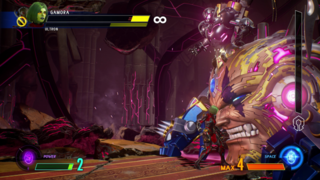
One thing Capcom succeeded in doing was making the game more approachable, while also maintaining a high skill ceiling. Since Marvel vs. Capcom 2, most high-level play was dominated by “touch of death” combos. These would lead you to not only take out one of your opponent’s three characters, but also set you up in an advantageous position against their next character to come in.
While Infinite still has these combos, most of the zero-to-death situations I’ve seen so far require a ton of resources, like three to four bars of meter as well as an Infinity Storm. I also haven’t seen these combos outside of training mode yet. The game also has higher damage scaling than UMvC3, meaning longer combos end up doing much less damage as time goes on.
Infinite also took a few notes from anime fighters like Guilty Gear and added an auto-combo, so if a player repeatedly connects with their light punch attack, they will string together a basic combo. It’s great not only for new players to understand how combos “feel,” but also to see what combos might look like for new characters.
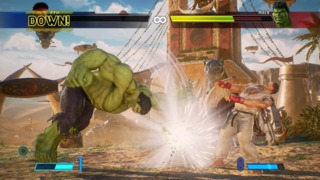
Sadly, what this game did not take from Guilty Gear is a diverse and robust training mode. The game’s mission mode will teach you basic mechanics such as how to move, jump, and block, as well as some advanced tactics like launcher combos. There are also 10 missions per character that will showcase special moves and basic combos. However, the depth of this mode feels outdated, comparable to Street Fighter IV’s training mode from 2009.
Games like Skullgirls, BlazBlue, and Guilty Gear Xrd all feature tutorials not only on how to do moves, but also why and when you might want to do a given move or more advanced tactics. Understanding how to play Marvel at the most basic level of competition is not easy, and if Capcom truly wanted to make the game more approachable, they should have created a better single-player learning experience.
The other main piece of single-player content in the game outside of an arcade mode is the cinematic story mode. The basic premise is that Ultron (the big scary robot from Iron Man) and Sigma (the big scary robot from Mega Man) team up with the power of the Infinity Stones. Due to some sort of magic with the reality stone, the universes of Capcom and Marvel are able to team up to stop the newly formed Ultron Sigma from releasing his Sigma-Virus, turning all who are exposed to it into killing machines.
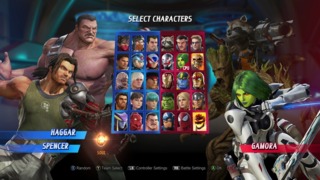
The story mode ranges from being fun and light, to just plain confusing, but maintains a decent quality throughout. Seeing the Hulk throw Ryu at a monster from Monster Hunter, or Dante and Iron Man high five over their shitty jokes is rewarding. There are twists and turns, and an especially intriguing post-credits scene Where it falls apart are the premises for why certain fights are happening, or who you’re controlling in each fight. It makes sense that the developers would want all 30 of the game’s characters to be played at some point during the story, but sometimes the justification to get there feels very thin.
Thin seems to be a word that could also describe the game’s roster. The game boasts 30 playable characters which, in a vacuum, seems pretty good. However, of the 30 characters, only six were not playable in UMvC3, and only four have never been in a Marvel game. The returning characters have all been re-worked in some way, and in addition to the Infinity Stones these updates make the characters feel “new” in certain ways, but the lack of new characters is disappointing. X-Men characters are also blatantly missing, especially noticeable given how important Wolverine, Sentinel, and Magneto are to the franchise.
It’s easy to imagine that Marvel has something to say about which characters are in their side of the game, as almost all of the characters have minor-to-major representation in the Marvel Cinematic Universe, but many of the Capcom choices come off as uninspired. Do we really still need Arthur and Firebrand? Chris Redfield and Nemesis? The only “new” Capcom character is Darkstalkers’ Jedah Dohma, a character we’ve seen already in plenty of fighting games.
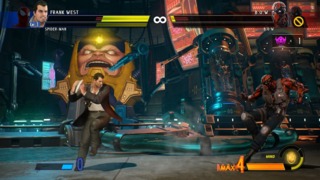
At the time of this review, the first batch of DLC characters has been confirmed, and while it’s nice that they are all characters not found in UMvC3, Infinite’s base roster is so lacking that it’s hard to not feel like this first group of completely new characters should’ve just been here from day one. The game does not feature any sort of winnable currency like the fight money used in Street Fighter V to unlock these DLC characters without paying real money or buying a season pass.
The last, and arguably most disappointing aspect of the game is its presentation and aesthetic. Even though the game has had multiple "corrective" art patches since pre-release, the graphics are still far below that of what you’d expect from a modern, full price video game. Things like super animations, stage backgrounds, and even character models range from “acceptable” to “incredibly poor.” At best, during the Infinity Storms, the particle effects look great, but as soon as you’re done with a fight you’re presented with a menu that looks straight out of a flash game from 2012.
The music is, again, similar to Marvel 3. Each character has a theme for when they enter the battle. For the Capcom characters, it’s the songs you want to hear from their games, but for the Marvel characters it’s very generic “superhero music.” Capcom fighting games at their best have had a consistent and cool sounds, like the smooth jazz from Marvel 2 or the hip-hop infused beats in Third Strike. This game lacks any sort of unifying feel that will be remembered fondly after players stop playing the game.
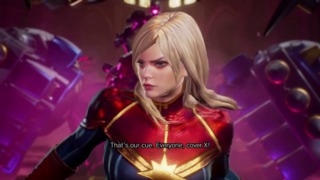
The online so far has been fully functional. The game features ranked and casual one-on-one matchmaking, as well as a lobby with spectator settings. I’ve managed to easily find matches with four or five bars of connection. The ranking system, unlike other competitive games, seems especially brutal. I have a somewhat positive win-loss record, but I am still rank 15, the starting rank. It seems that to progress even one rank you have to net close to 10 wins over losses. Games like Hearthstone are great about letting you immediately know you’re doing well when you start to climb the ladder, ranking up quickly at first and then slowly over time, whereas this game just feels at times insurmountable. Unique to this game is the “Beginner’s League,” a league where only rank 14 and 15 can enter, so you'll theoretically get matched with someone else new.
Many people would be happy with any sort of revival of Marvel vs Capcom, considering how dead the franchise seemed after UMvC3 came and went. But playing and thinking about Marvel vs Capcom: Infinite, one can’t help but wonder about what it could have been. Hopefully Capcom will continue to support the game as they have with Street Fighter V. Infinite might not share the innovation of MvC1, the style of MvC2, or the leaps in gameplay of MvC3, but what it does have is a fun, challenging core gameplay system. And at the end of the day, it’s still Mahvel, baybee.